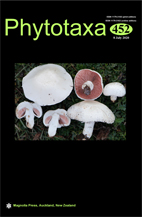Abstract
Two new Dactylellina (nematode-trapping fungi) species, D. yushanensis and D. cangshanensis from the burned forest soil in Cangshan Mountain, Yunnan Province, China are introduced in this paper based on morphology and phylogenetic analysis. Their descriptions and illustrations are provided. Dactylellina yushanensis is characterized by its geniculate branched conidiophore, two types conidia and fusiform, clavate or drop-shaped microconidia grown in conidiophore or produced by macroconidia with micro-cycle conidiation pathway. Dactylellina cangshanensis is characterized by its fusiform, spindle-shaped, clavate or drop-shaped conidia with 2-4-septate. Phylogenetic analysis based on combined ITS, EF1-α and RPB2 sequence showed that these two species cluster together with D. ellipsospora with obvious genetic differentiation.

